A pilgrimage to ISKCON Bangalore chanting Hare Krishna Hara Rama
ISKCON Radha Krishna temple is situated on the banks of busy Bangalore metro. The temple which is located in Rajajinagar of North Bangalore is one of the largest ISKCON ritvik temples in the world, and is indeed a hot favourite of pilgrims. The project conceived and executed by Madhu Pandit Dasa, an IITan, now it’s one of the biggest Krishna temples of India. Through this column I would like to briefly explain the customs and rituals associated with ISKCON and how the temple was built on mountain top.

Mind filled with Krishna’s thoughts
Visuals of Gopuram with mirrors and a flag fixed on its top are visible from a long distance. Sights of the temple are really spectacular. A glimpse of Krishna Leela is visible everywhere. To reach the main temple, you need to climb 108 steps. Devotees chant the mantra ‘Hare Krishna Hara Rama’ when they take each step leading towards the temple. As per beliefs, the sins will fade away when you climb those 108 steps and reach the abode of Lord.
Iskcon temple has three gopurams (temple structures) as three distinct layers, built in Tanjavur style and it exhibits the creativity of architects. After taking 108 steps, you first reach Prahlada Narasimha temple. The idol of Lord carrying Shank, Chakra, Gada and Padmam is decorated using precious diamonds and gold. Narasimha with peaceful face is worshipped here. Marble is used for floor construction and granite for Sree Kovil (Main temple) of Narasimha.
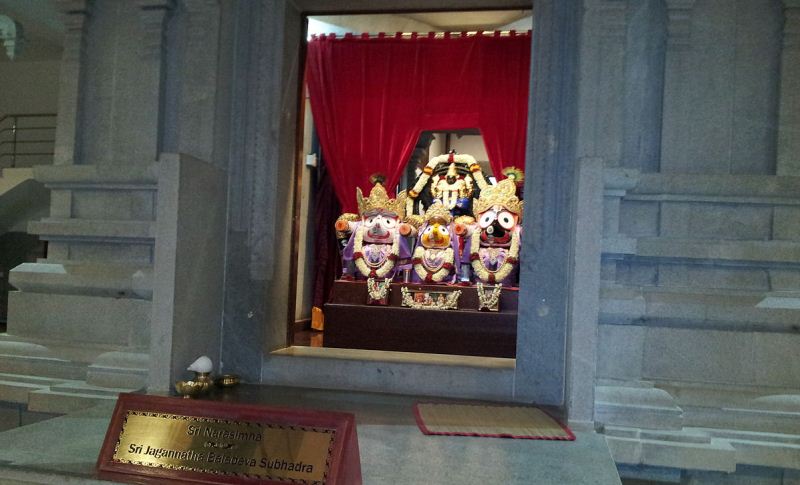
After praying before Narasimha, you need to take steps which lead to Sreenivasa Govinda Swamy temple. This temple is constructed on the second level of the gopuram. Tirupati Venkadeshwaran presides here in the form of Sreenivasa Govinda Swamy and is decorated using gold, pearl and red coral. Lakshmi Devi temple is situated on the left side of Lord. As per beliefs, Padmavati (Lakshmi) also resides here, alongside Tirupati Venkadeshwaran. On the right side, Krishna, Rukmini and Sathyabhama reside.
Now towards the main temple of Krishna
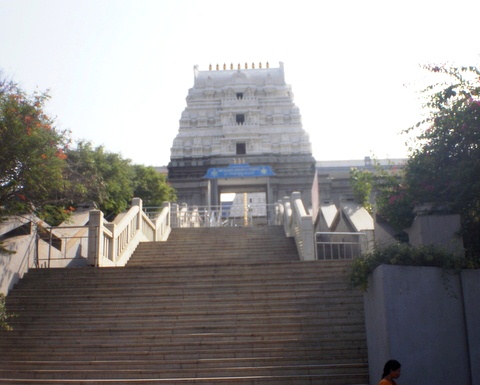
The big door is made from wood. The main temple is indeed a wonder of present times. The temple is situated on the third and final floor of the temple complex with three gopurams. Krishna Leela is drawn beautifully on temple roof. Some of those attractive drawings include – Krishna carrying Govardhana mountain on left hand, Rasaleela, Krishna as cowherd, Krishna playing on the banks of Yamuna river etc. A big lamp hangs at the centre of the ceiling.
Krishna’s shining idol
After evening Aarti, Sayana Aarti and Pallaki Ulsav form a daily routine in the temple. After that the temple closes. There are three doors leading to the main temple. On the left door, Krishna and Balarama abode. In the middle portion, Krishna and Radha temple is located, and on the right side, Nitai Gauranga – an avatar of Lord Krishna. These temples are entirely different from other temples. All these deities shine in silk clothes and gold ornaments.
Plough is present in the hands of Lord Balarama. Krishna carries a stick for Dahi Handi (to steal butter). Costumes of Krishna and Radha are stitched together. Apart from these big idols, small idols are also placed.
The Aarti (pooja ceremony using fire lamp) also follows certain customs. Aarti is conducted simultaneously for all these three temples at the same time and done by temple priests. Aarti is done using 7 different offerings – Lamp (Deepam), Smoke (Dhoopam), Water (Jalam), Dress (Vastra), Flowers, Venchamaram and peacock feathers. Sayana Aarti follows Sandhya Aarti, which is the last pooja of the temple.
The deity of Lord Krishna will be taken to the room next to main temple. Devotees chant Krishna’s name and mantras throughout these rituals. They clap their hands in rhythm chanting “Hare Krishna Hare Krishna, Krishna Krishna Hare Hare”.
When the rituals are completed, Shank is blown. Priests sprinkle holy water to the devotees who are present at that time. Decorated chariot reaches in front of the main temple and idols are placed into it. Musical instruments will be played this time. Saints take the chariot on shoulders and slowly move it according to the tunes like a swing. Then they circumvallate the temple and the devotees follow them. They clap their hands in rhythm chanting “Hare Krishna Hare Krishna, Krishna Krishna Hare Hare” and a few dances also. After circumvallating for three times, the idols are taken to another room, where they are put to sleep.
Soon after these rituals are completed temple bell rings indicating the close of the temple. Devotees too return from the main temple. In the early 4 am there in Mangala Aarti, to wake the Lord.
The fresh sights of the temple
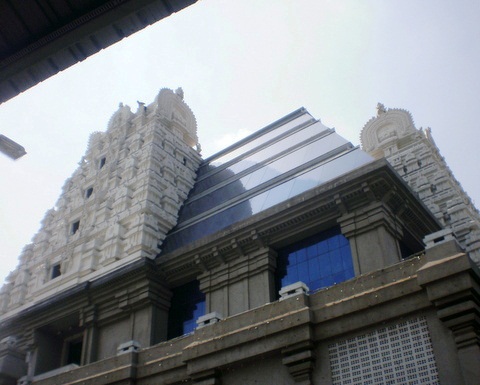
Asper belief, gods do everything which normal humans do. There are three types of idols in the temple – Moolavar, Ulsavar & Kauthuka. The biggest one is called Moolavar, and Abhishekam is conducted once in 12 years. Ulsavar & Kauthuka are small idols. Rituals are conducted in Kauthuka. Royal lunch with 16 dishes (Rajbog), milk and flowers, sweets etc are given as offerings. The lord is also given sleep using a chariot. A small bed is also provided. Brush and tongue cleaner are also placed. All idols will be beautifully decorated. The interior of main temple is given high power supply and provided with bright electric lamps.
Temple rituals are also different from other temples. Temple is built as a complex. A few shops are also seen near to temples, which sell products related to Krishna. Agarbati, perfumes, Krishna statues, toys with the picture of little Krishna, costumes for kids, books related to Hindu mythology, sweets …. All the products are manufactured here. There is a theatre which shows Krishna’s cartoons. Free meal is provided to pilgrims every day. Accommodation facilities are also available.
Akshaya Patra which provides free meals to school kids
Iskcon has put forward several activities related to charity. The contributions of the organization, Akshaya Patra is most important, which contributes free lunch to 1.4 million school kids across 10 states of India. For his contributions towards this field, Madhu Pandit Dasa has been honoured with Padma Sri. He currently serves as the President of ISKCON Bangalore, Chairman of The Akshaya Patra Foundation and Chairman of Vrindavan Chandrodaya Mandir. Akshaya Patra project was a case study of Hayward Business School, and was initiated 16 years ago. Madhu Pandit Dasa, who got inspired with Prabhu Padar reached Yaswantapuri in the late 1980s.
Prabhu Padar started ISKCON (International Society for Krishna Consciousness) initiated Akshaya Patra too. An incident happened in Kolkata long back in 1976 prompted him to start a free meal activity. Once he happened to watch the fight of street kids with dogs for the food thrown on waste. The thought that no kid within 10 miles radius of ISKCON should never sleep hungry resulted in the Akshaya Patra project.
The project started with giving free meals to 1500 kids of a school. Now the organization has spread vast and currently gives meals to lakhs of kids. Food is prepared in the kitchen of Hare Krishna Hill, and later transported to schools before noon. The kitchen functions 24 hours a day.
Hare Krishna Hill was once a plain hill
Long before ISKCON was started in Hare Krishna Hill, it was only a plain hill. When Madhu Pandit Dasa reached Yaswantapuri in the late 1980s, he dreamt to build a Krishna temple here. With no money in hand, he started off and now ISKCON at Bangalore has turned to an institution. He dreamt to build a temple which holds traditional values and culture, not only just a temple for pilgrimage. That’s why this temple is a unique blend of old and new architecture.
Though he completed Civil Engineering from IIT, he didn’t have work experience in this field. So he approached his friend N. R. Joseph from IIT who designed the temple. After that many architects got associated with the project and finally completed by Madhu Pandit Dasa himself. He certifies that there is a feel of divinity within the temple.
He planned to build the main temple only. But when pilgrims expressed their difficulties to travel large number of steps leading to temple, he planned two more temples just below the main temple. He believes that chanting Hare Krishna Mantra gives solutions to all his problems. Started without a single penny in hand, the temple was completed in 30 crore rupees, offered by devotees.
How to reach ISKCON at Bangalore?
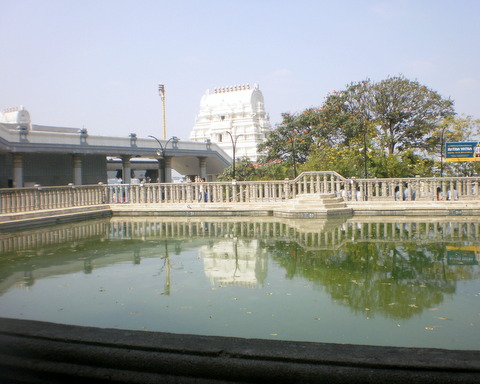
The temple is situated in Hare Krishna Hill of Rajaji Nagar of North Bangalore. From Bangalore city railway station, the temple is at 7 kms distance. From Yashwanthpur railway station, it’s only 2 kms. Mahalakshmi is the nearest metro station. Accommodation facility is also available at temple.
Image source: Wikipedia
Also read a few more articles on temples of India outside Kerala. Click on the images in the gallery to read

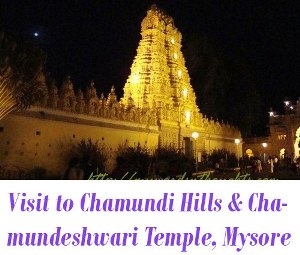
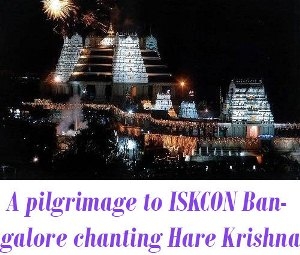
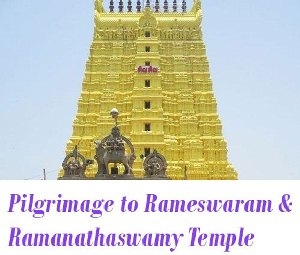
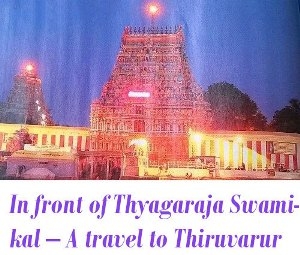
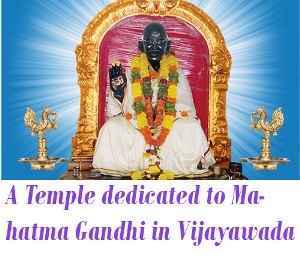
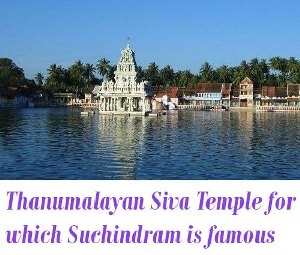

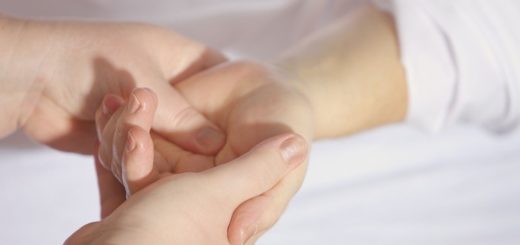



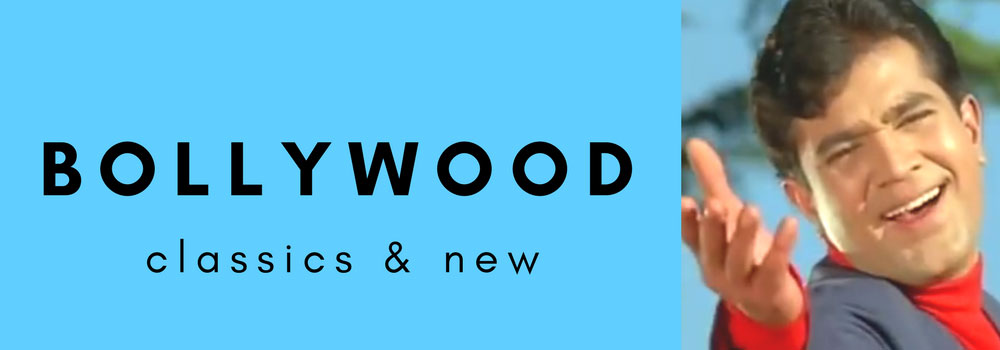
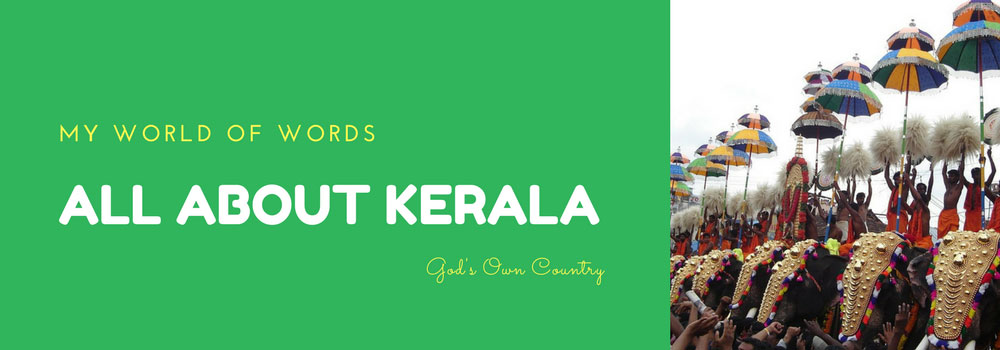






Recent Comments